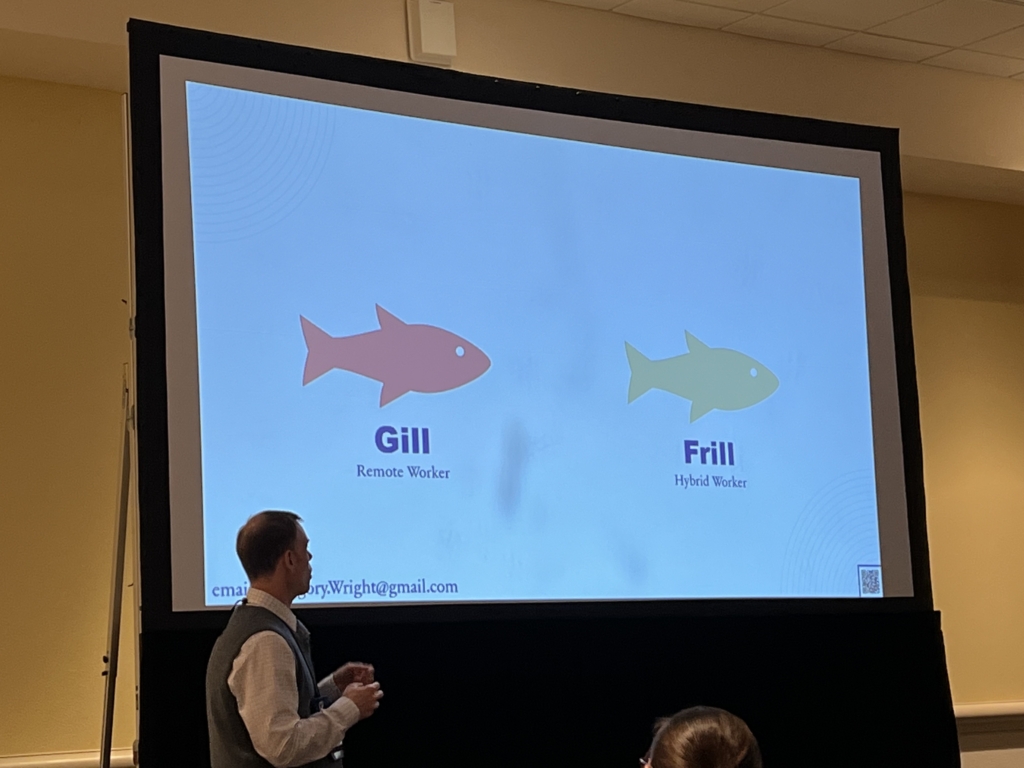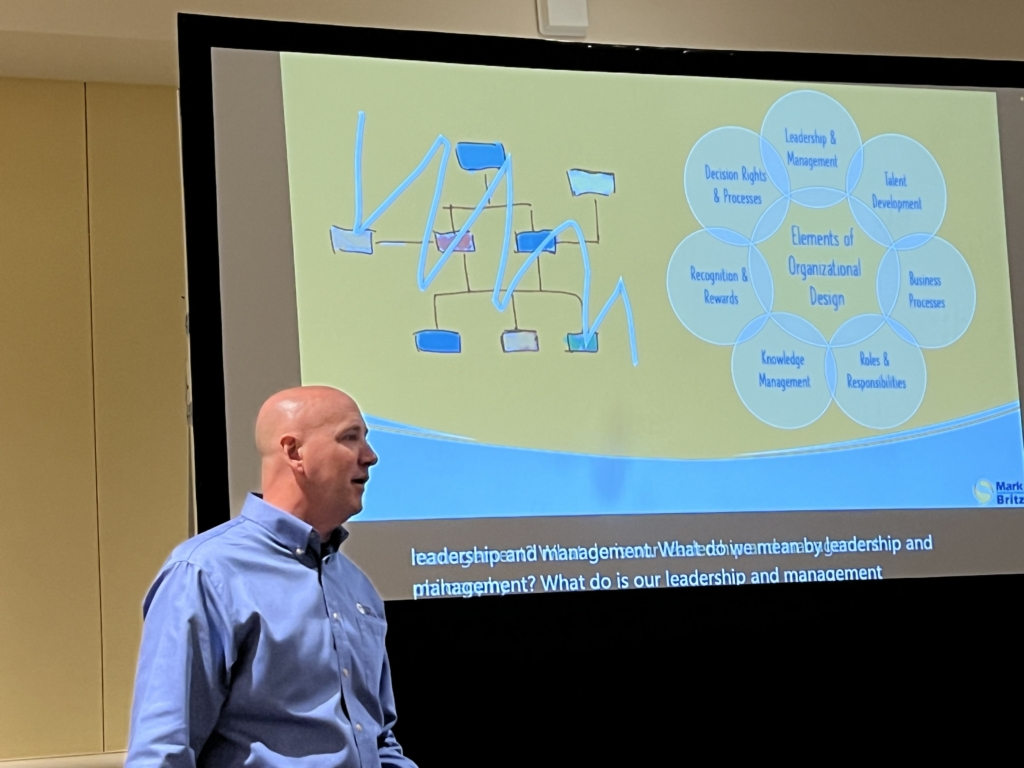I had the opportunity to attend the Learning Solutions 2023 Conference hosted by the Learning Guild, held at the beautiful Rosen Shingle Creek Resort in Orlando, Florida. As an avid learner and professional in the eLearning industry, I was thrilled to participate in this annual event that brings together learning and development professionals from around the world.
During my time at the conference, I had the chance to attend keynote presentations, participate in hands-on workshops, and network with fellow professionals in the industry. The sessions were informative, engaging, and covered a range of topics, including instructional design, eLearning development, performance support, and emerging technologies. Here a just a few reflections from Key Notes and Sessions I attended.
5 Lessons from KateTheChemist
KateTheChemist.com is the website of Dr. Kate Biberdorf, a scientist, professor, and science entertainer. Her website is a treasure trove of resources for science enthusiasts of all ages, featuring experiments, videos, and educational content that makes science fun and accessible. Here are five tips we can learn from KateTheChemist.com
Remember Williams James
William James, a pioneering psychologist, once said, “The greatest discovery of my generation is that a human being can alter his life by altering his attitudes.” KateTheChemist.com embodies this philosophy, using the power of positive attitude and enthusiasm to make science accessible and fun. By adopting a positive attitude and looking for the fun in science, we can all become better science communicators and enthusiasts.
Look into your community
One of the things that sets KateTheChemist apart is its focus on community. Kate is passionate about reaching out to young people and underrepresented groups, bringing science to them in a way that is engaging and accessible. By looking into your own community and finding ways to engage with people who may not have access to science education, you can make a difference and inspire the next generation of scientists.
Consider your image
KateTheChemist.com is a great example of how important image can be when it comes to science communication. Kate’s bright pink lab coat and bubbly personality help to break down barriers and make science fun and accessible. When communicating science, it’s important to consider your image and how you are presenting yourself. By adopting a fun and approachable persona, you can help to make science more engaging and accessible to a wider audience.
Be a good mentor
KateTheChemist.com is not just about science experiments and videos – it’s also about mentorship. Kate is passionate about helping young people find their passion for science, and she serves as a mentor and role model for many aspiring scientists. As science enthusiasts, we can all strive to be good mentors and role models for others, whether it’s by volunteering at a local school or community center, or simply by sharing our enthusiasm for science with others.
Breathe fire
Finally, KateTheChemist.com is all about breathing fire – that is, being passionate and enthusiastic about science. By embracing our inner fire and sharing our love of science with others, we can inspire the next generation of scientists and make a real difference in the world. So let’s all take a page from KateTheChemist.com and breathe fire – who knows what amazing discoveries we might make!

Winning Against Isolation: 3 Types of Motivation for E-Learning Success
In the world of e-learning, motivation is a critical factor that can make or break a learner’s success. That’s why I was particularly excited to attend Dr. Gregory Wright’s presentation on “Winning Against Isolation: 3 Types of Motivation for E-Learning Success” at the Learning Solutions 2023 Conference hosted by the Learning Guild.
Dr. Wright is an accomplished author, speaker, and consultant in the fields of e-learning and instructional design, with over 25 years of experience in the industry. In his presentation, he shared his insights on the three types of motivation that can help learners succeed in e-learning, even in the face of isolation and other challenges.
Whether you are studying from home or working remotely, it can be difficult to stay motivated and engaged when you are alone. However, there are ways to overcome this challenge and win against isolation. In this blog post, we will explore three types of motivation and how they can help you stay motivated and achieve your goals.
Motivation 1.0: Survival
The first type of motivation is survival. This is the most basic form of motivation and is rooted in our biological need to survive. In an isolated environment, this type of motivation can be useful when it comes to completing essential tasks, such as eating, sleeping, and staying healthy. To tap into this type of motivation, you can focus on the benefits of completing these tasks, such as feeling energized and healthy, which can help you stay motivated.
Motivation 2.0: Rewards and Punishments
The second type of motivation is rewards and punishments, also known as carrots and sticks. This type of motivation is based on the idea that people will work harder if they are rewarded for their efforts or punished for their mistakes. While this type of motivation can be effective in the short term, it is not sustainable in the long term. In an isolated environment, it can be difficult to implement this type of motivation, as there are no immediate rewards or punishments. Instead, you can focus on setting goals and rewarding yourself when you achieve them. For example, you could treat yourself to a movie or a meal when you complete a challenging task.
Motivation 3.0: Autonomy, Intrinsic, and Self-Directed
The third type of motivation is autonomy, intrinsic, and self-directed motivation. This type of motivation is based on the idea that people are most motivated when they have control over their work and are doing something they find meaningful. In an isolated environment, this type of motivation can be particularly effective, as it allows you to take ownership of your learning and work. To tap into this type of motivation, you can focus on finding tasks that you find meaningful and that align with your interests and values. You can also set goals that are aligned with your personal and professional aspirations and create a plan to achieve them.
In conclusion, winning against isolation requires motivation, and there are three types of motivation that can help you stay motivated and achieve your goals. Survival motivation is useful for completing essential tasks, rewards and punishments can help you achieve short-term goals, while autonomy, intrinsic, and self-directed motivation can help you stay motivated and engaged in the long term. By understanding these types of motivation and how to tap into them, you can overcome the challenges of isolation and achieve success in your learning and work.
Social/Systems Assessment: Evaluating the Health of Your Organization

Mark Britz, Director of Events, gave a presentation on social learning and its impact on the learning industry. With his extensive experience in the field of learning and development, Mark shared his insights and best practices for creating effective social learning experiences. Mark has devised a social learning survey to evaluate how your organisation is performing when it comes to social learning.
In any organization, there are a variety of systems and processes in place that impact how employees work together, communicate, and achieve their goals. Social and systems assessments can be a useful tool to evaluate how well these systems are functioning and identify areas for improvement.
The assessment tool presented here includes nine statements related to key organizational design elements, such as decision-making rights, talent development, and recognition and rewards. By rating your level of agreement with each statement, you can gain insight into the health of your organization and identify areas for improvement.
Some of the key areas to pay attention to in the assessment include:
- Decision-Making Rights: Do employees have a voice in decision-making processes that affect them? Are they able to offer input and feedback?
- Talent Development: Are employees actively seeking out training and development opportunities? Are they giving and receiving feedback as part of the development process?
- Leadership & Management: Are employees clear on the goals and vision of the organization? Are they comfortable approaching leaders and managers with ideas and concerns?
- Knowledge Management: Are employees actively seeking out and using information and knowledge from various sources? Are they participating in knowledge-sharing initiatives and forums?
- Recognition & Rewards: Are employees clear on the criteria and process for recognition and rewards? Are they providing feedback and suggestions for improvement?
- Technology: Are employees actively using enterprise social technology tools to share information and collaborate with colleagues?
- Roles & Responsibilities: Do employees understand their own roles and responsibilities within the organization? Are they communicating openly with managers and colleagues to ensure alignment?
- Business Processes: Are employees collaborating with other departments and teams to streamline and optimize workflows and procedures? Is there ample space for employees to engage in deeper conversations about assignments and tasks?
Attending the Learning Solutions 2023 Conference was a great opportunity to connect with learning and development professionals from around the world. Whether it’s inspiring the future workforce as KateTheChemist does “breathing fire”, tips of fighting Isolationism from Dr Greggory Wright or how to advance social learning in your organisation by rewarding transparent this learning community of best practices continues to add value not just to individual and teams but to real businesses. The most important thing is to take any learnings away and share them with people who didn’t attend so that they can learn and develop.



 Some of the benefits of Extended Learning Enterprise are:
Some of the benefits of Extended Learning Enterprise are: